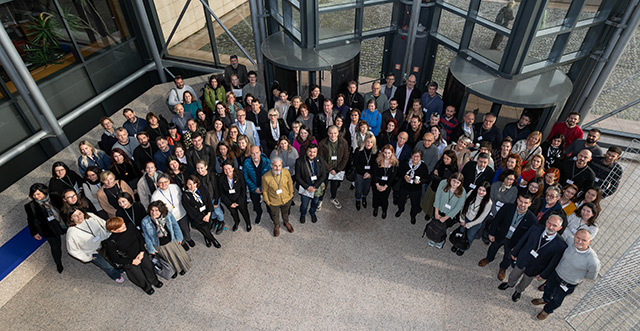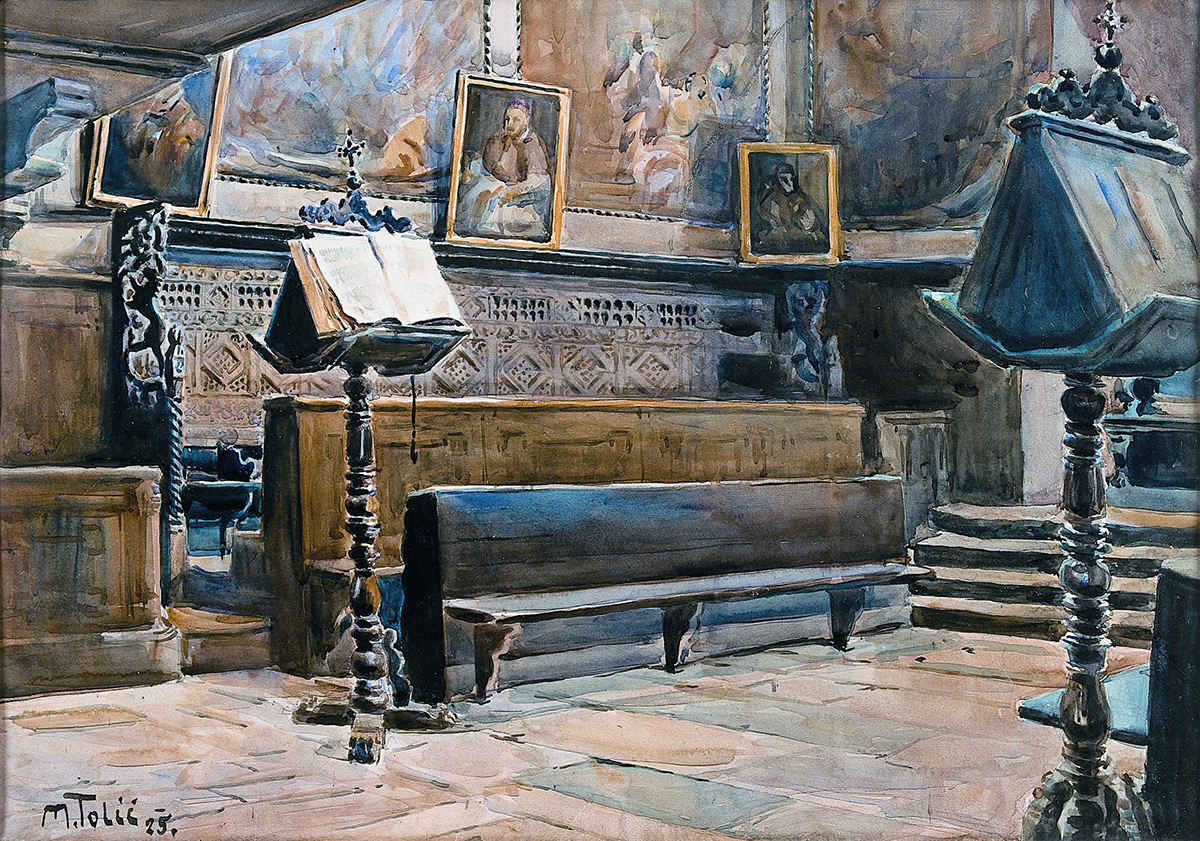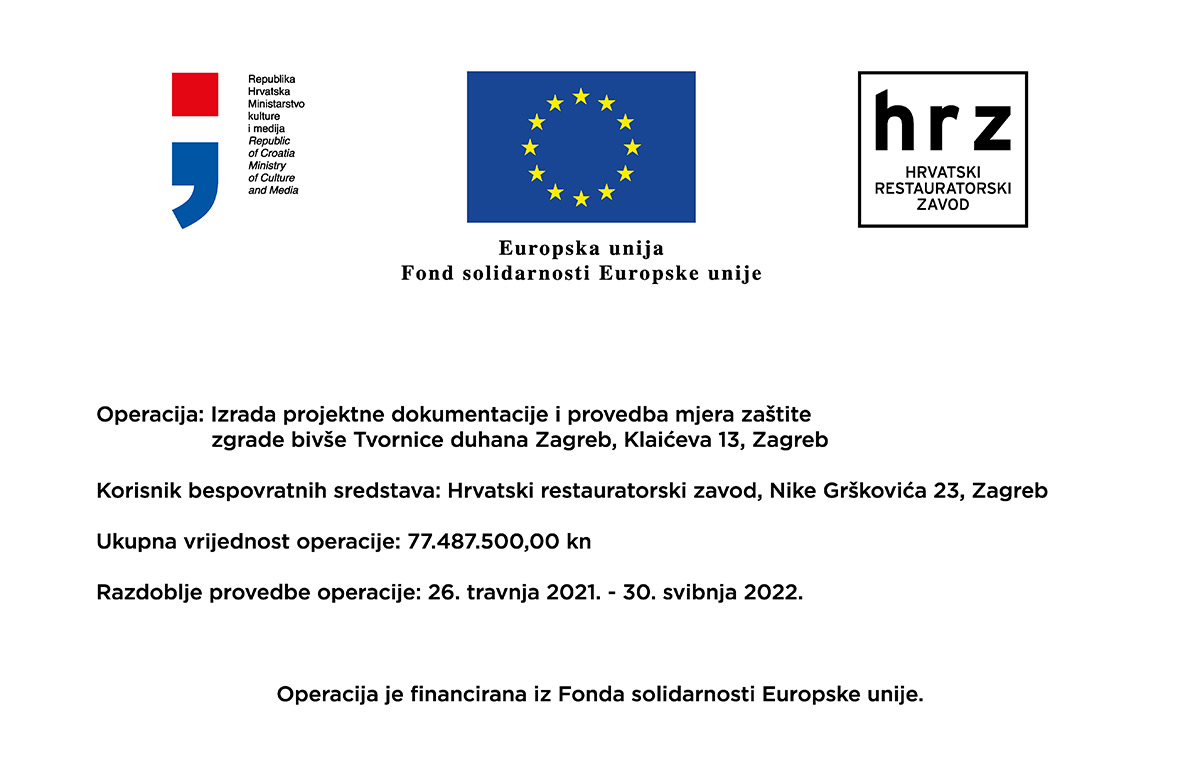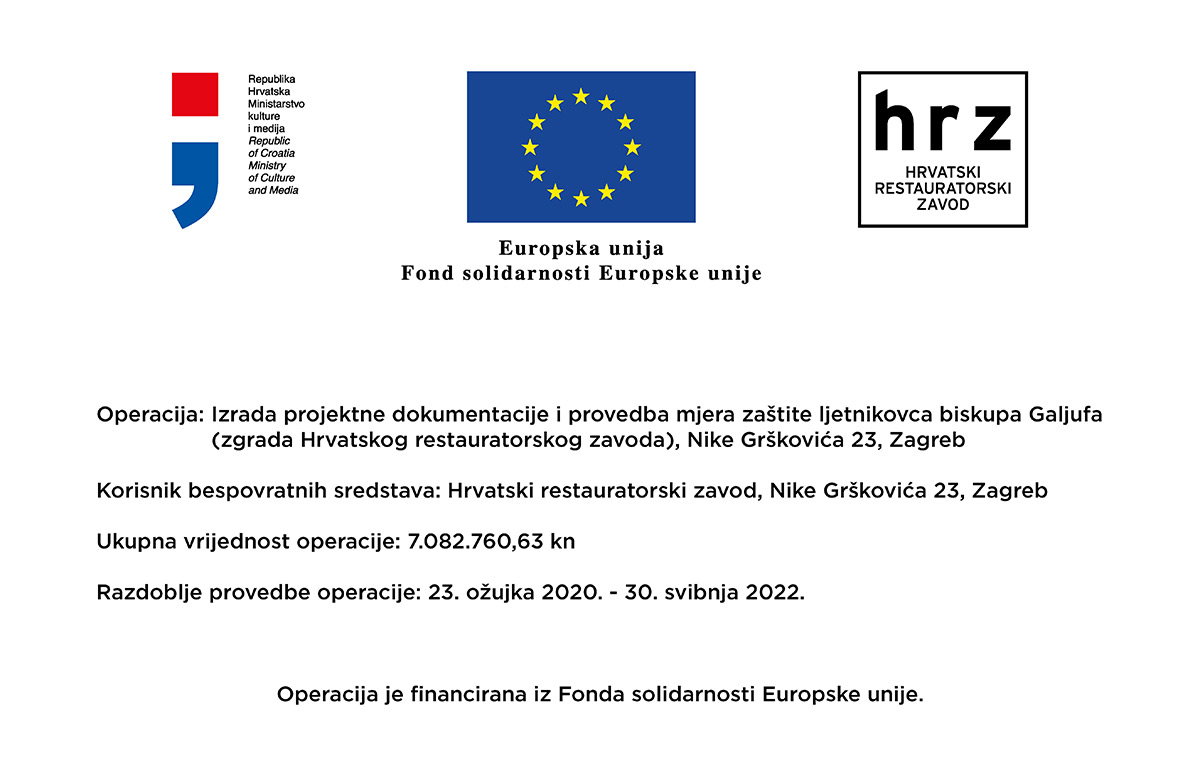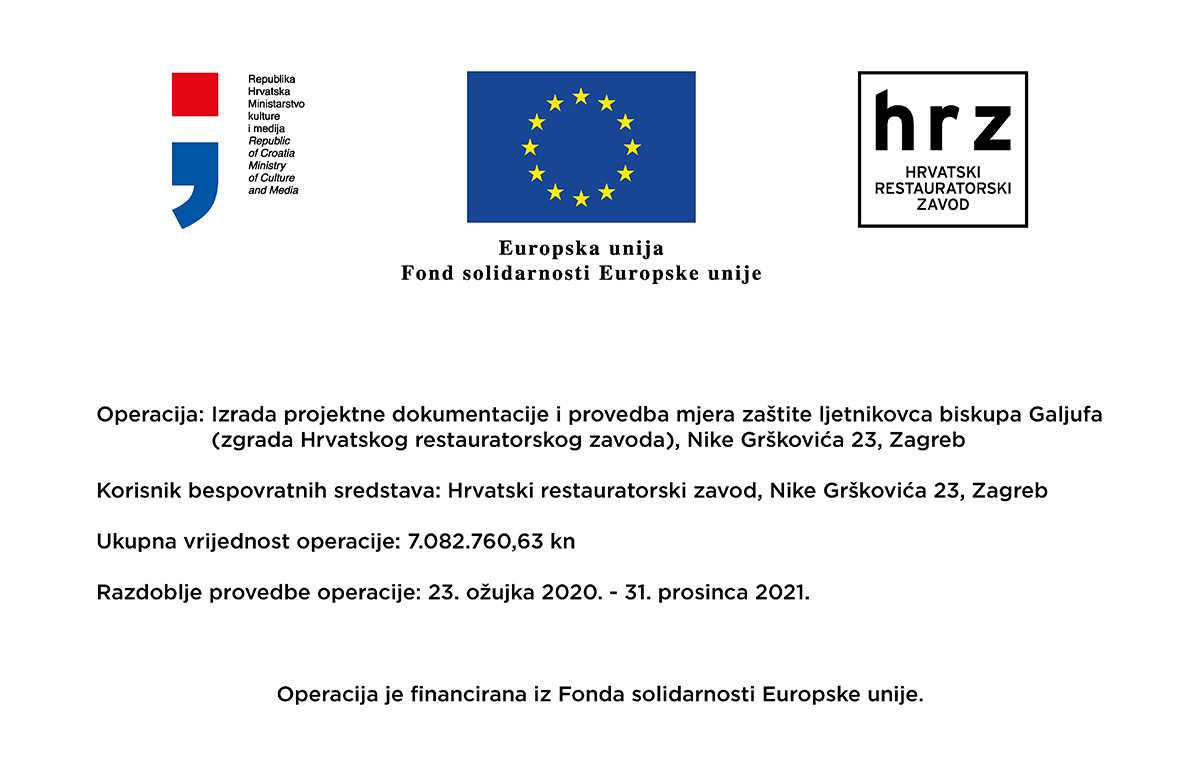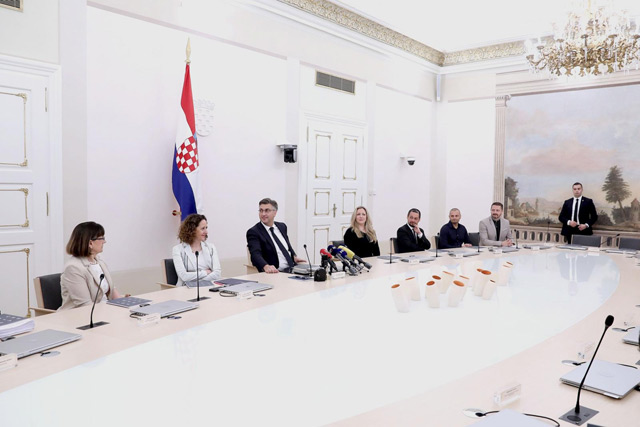Address
Croatian Conservation Institute
Nike Grškovića 23
10000 Zagreb, Croatia
Tel. +385 (0)1 4683 515
E-mail: uprava@hrz.hr
Activities
The Croatian Conservation Institute was founded in 1997 by the Decree of the Government of the Republic of Croatia on a Merger of Public Institutions in the Field of Conservation and Restoration owned by the Republic of Croatia: the Institute for Restoration of Works of Art (founded in 1948) and the Conservation Institute of Croatia (founded in 1966).
The main activity of the Croatian Conservation Institute is conservation and restoration of immovable cultural goods (architectural heritage, wall paintings and mosaics, stone sculptures and stucco), movable cultural goods (easel paintings, wooden polychrome sculptures, furniture, art on paper, artworks of leather, and items of textile or metal), archaeological heritage, and other objects of cultural, historical or technical significance.
In addition to the Director, appointed by the Government of the Republic of Croatia at the recommendation of the Minister of Culture, the Institute is governed by a Steering Council, appointed by the Minister. The Institute, financed from the state budget, closely cooperates with conservation departments of the Directorate for Cultural Heritage Protection of the Ministry of Culture of the Republic of Croatia, and with professional and scientific institutions in Croatia and abroad. The purpose of this cooperation is the fulfilment of the Institute's tasks in the fields of research, conservation-restoration, protection, and preservation of cultural assets.
Historical Development
The foundations for systematic conservation and restoration activity in Croatia were first laid in 1948 with the founding of the Conservation Institute within the Croatian Academy of Sciences and Arts, followed by the establishment of the Split workshop at the Split Conservation Department in 1954, and the Zadar workshop at the Zadar Department of the Croatian Academy of Sciences and Arts in 1958. Significant impetus for further development of the activity came from the founding of the Conservation Institute of Croatia in Zagreb in 1966. The Institute was conceived as the central conservation and restoration institution, taking under its wing protective work on architectural and overall artistic heritage, and also a natural science laboratory. Twenty years later, the Institute for Restoration of Works of Art, formerly known as the Conservation Institute of the Academy of Sciences and Arts, inaugurated the first department outside Zagreb: the Vodnjan-Juršići Department for the region of Istria and Primorje.
The military aggression against Croatia in 1991 and the destruction of cultural heritage that accompanied it had a negative impact on the momentum of development of conservation and restoration activity. Space was made in Batthyány Castle in Ludbreg for the central storeroom for evacuated objects of art, and an atelier for their conservation and restoration, with specially designed conference rooms to meet the needs of professional conventions and international cooperation programmes. In Dubrovnik, Villa Stay was renovated and adapted for use by the Dubrovnik Restoration Department. In Osijek, a Restoration Department was opened in the Tvrdja (Fortress), which also provided facilities for housing and promoting traditional crafts.
The turning point in the conservation activity came at the beginning of 1997 with the decision of the Government of the Republic of Croatia to merge the Institute for the Restoration of Works of Art and the Conservation Institute of Croatia into one institution: the Croatian Conservation Institute. In addition to the headquarters of the Institute's Administration, departments and workshops specializing in the conservation and restoration of specific types of works of art are located in Zagreb, Split, Dubrovnik, Ludbreg, Rijeka, Zadar, Osijek, Vodnjan and Juršići.








